Art reviews: Edinburgh Art Festival Commissions Programme | Platform 2021
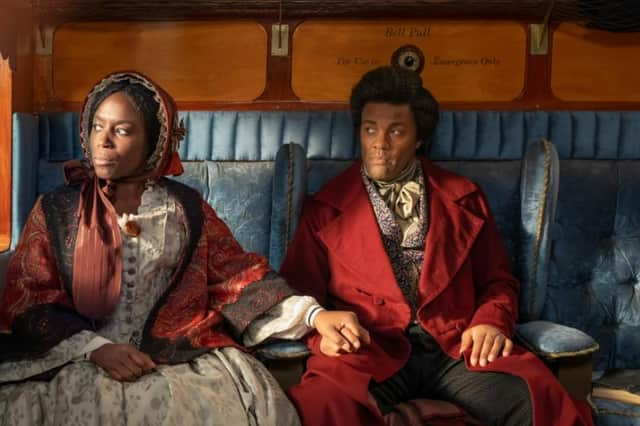

Isaac Julien: Lessons of the Hour, Scottish National Gallery of Modern Art ****
Sean Lynch: Tak Tent O’ Time Ere Time Be Tint, Edinburgh Sculpture Workshop ***
Emeka Ogboh: Song of the Union, Burns Monument ****
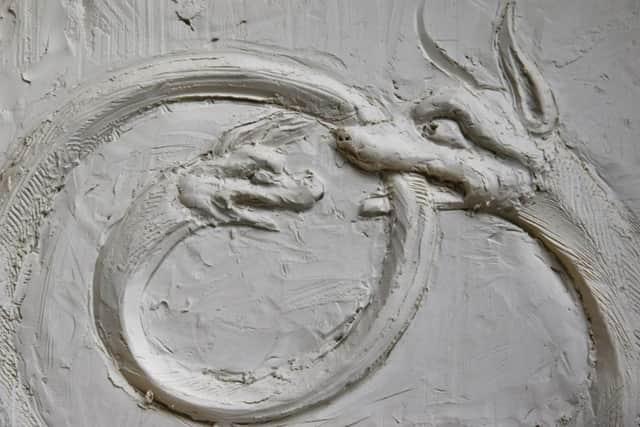

Platform: 2021, French Institute **
Advertisement
Hide AdAlong with the Edinburgh Jazz & Blues Festival, the launch of the Edinburgh Art Festival helps get Edinburgh’s festival season under way. This year, of course, things are rather different, with other festivals adopting new and hybrid models. The Art Festival, however, is physically present and open for business. The sticker on the mosaic floor of the French Institute says it all: Art is Back.
Topping the bill in the EAF Commissions Programme is the UK premiere of Isaac Julien’s Lessons of the Hour, his impressive multi-screen installation about the life of freed slave turned abolitionist Frederick Douglass. Although the work has been shown extensively in the US, Douglass actually spent two years in Scotland where he was involved in a campaign to get the Free Church to return donations they had solicited from slave owners, and took the free name “Douglass” out of admiration for Walter Scott’s “The Lady of the Lake.”
He was, it is said, the most photographed American of the 19th century, and had a great interest in photography, believing that democratising the production of images could help challenge the perpetuation of white racist stereotypes. A selection of tintypes of Douglass and of his wife and fellow activist, Anna Murray Douglass, accompany the film.
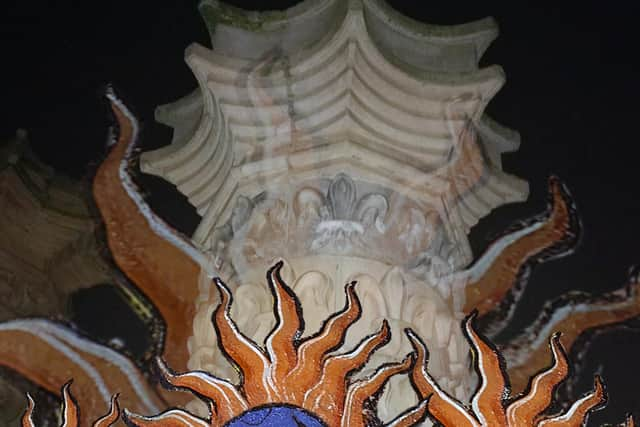

Using 10 screens, Julien creates immersive tableaux vivants from Douglass’ life. At times, the screens work together to create moments rich in atmosphere or historical detail; at times they juxtapose past and present, particularly with the inclusion of FBI surveillance footage of protests in Baltimore (where Douglass grew up) after the death of Freddie Gray in police custody in 2015.
The contemporary footage acts as a bridge to our own time. Douglass lived to see slavery abolished and went on to campaign in later life on issues such as lynchings and suffrage. His words (mostly taken verbatim from his writings and speeches) resonate powerfully today in a world which still has a long way to go to reach racial equality.
If Julien’s work memorialises Douglass and reminds us of his continuing relevance, Sean Lynch’s work at Edinburgh Sculpture Workshop points the finger at some of Edinburgh’s more dubious monuments, particularly the figure of Henry Dundas, atop a vertiginous column in St Andrew’s Square, the de facto ruler of Scotland in the late 18th century who managed to delay abolition by a catastrophic 15 years.
Advertisement
Hide AdLynch’s film is a well observed look at Edinburgh’s statuary, and those it memorialises, as well as the memorial industry of the 19th century. What is to be done, he asks, with Dundas? Should he pulled down, or will weather and shifting public opinion render him obsolete soon enough? However, the artist taking a surreptitious imprint of part of the column using a clay pack hidden inside his trousers seems an absurd tangent in an otherwise intelligent discussion.
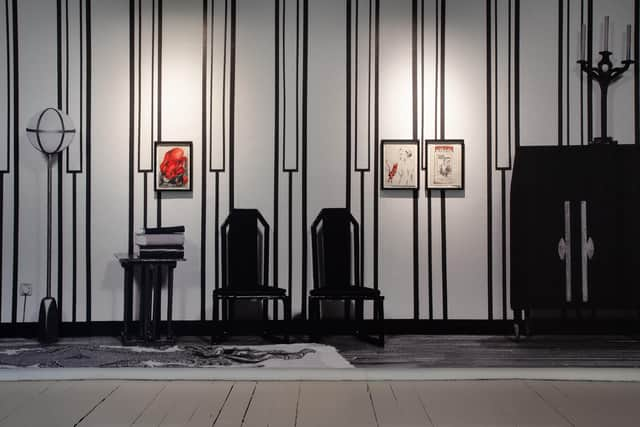

The film is only one element in Lynch’s installation. Displayed inside what feels like a working studio, there is an investigation to rediscover the secret recipe for Coade Stone, a composite material from the 18th used for architectural ornaments, a set of images referencing the Aberdeen Bestiary, and the title is a Scots “carpe diem” from the wall of a stonemason in Newhaven. While these disparate sources don’t quite hang together, the work is never less than interesting.
Advertisement
Hide AdMeanwhile, in the Burns Monument on Regent Road, Nigeria-born Emeka Ogboh has created another memorial. Visiting the monument in February 2020, he recalled that, just 12 days earlier, MEPs had linked hands and sung Auld Lang Syne after voting on the final withdrawal agreement between the UK and EU.
His idea, which he had to oversee from his base in Berlin due to lockdown, was to record a chorus of singers, one from each EU country, singing Auld Lang Syne in their native tongue. Somehow, the Talbot Rice team managed to record each voice individually, and these were then expertly blended together into a harmonious polyphony. An algorithm created by Ogboh means every visitor will hear them in a slightly different combination.
The result is a sung memorial to the EU, created by 27 EU citizens living in Scotland through the Brexit years. Taking on the words and the spirit of Burns, it does what a memorial should do: provide a space for appropriate sadness, while valuing the thing which is lost and mark its passing in a way which should not be forgotten.
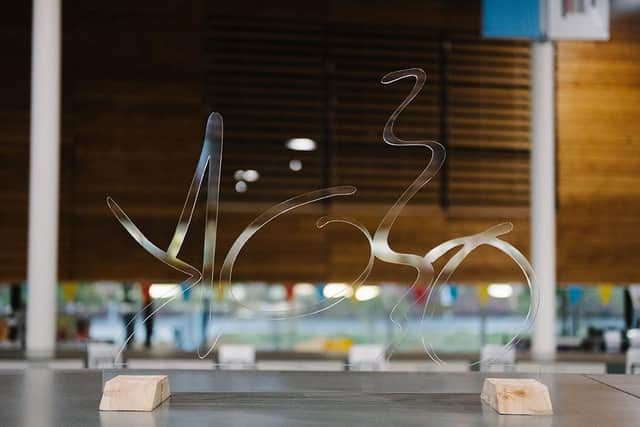

Meanwhile, this year’s EAF Platform programme for emerging artists spreads itself through a number of rooms in the French Institute. It’s a substantial and serious show, by artists who are some years on from being recent graduates. That said, it’s not an easy show.
Jessica Higgins’ film Hold Music (Denise’s Ear) is about a debt advisor who develops an ear infection – a metaphorical one which takes us into the territory of broken communication and surreal feedback loops. Although much research feeds into it, from the origins of call centre hold music to the history of debt, what it has to say remains obscure.
Danny Pagarani’s work seems to be concerned with miscommunication, perhaps with mis-translation, taking its starting point from the word “at” which, in Sierra Leone Krio, can mean both “hurt” and “heart.” There is a film in which Pagarani’s father recites Krio phrases, and two others with jumbled sounds and footage which seems to fetishise certain objects. Again, any meaning is lost.
Advertisement
Hide AdIsabella Widger draws very well, making a body of work in response to Flaubert’s 1877 novella A Simple Heart, about a housemaid in post-revolution France. It’s well-made work but seems principally concerned with its dialogue with Flaubert. Kirsty Russell makes textile sculptures, a tufted yarn rug and two-hand sewn quilted blankets. Concerned with issues of care, and the strain put under systems of care during the covid-19 pandemic, she focuses on the parts of garments which carry the most weight.
All four artists present work which seems rigorous, well-researched and conceptually rich, but the show as a whole seems to have lost sight of the idea of art as a means to communicate with an audience.
Advertisement
Hide AdIsaac Julien until 10 October; other commissions until 29 August. Some shows require pre-booking. For more information see www.edinburghartfestival.com
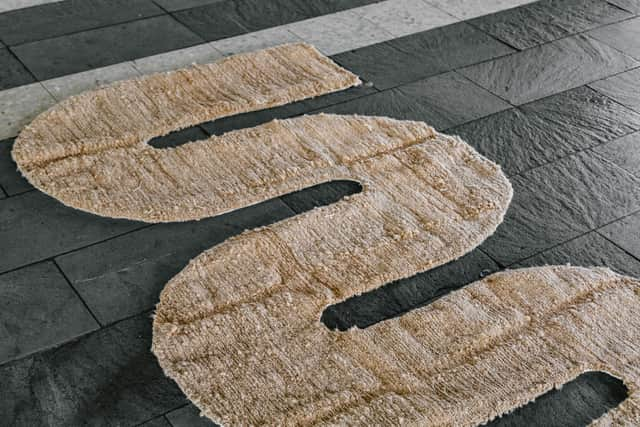

A message from the Editor:
Thank you for reading this article. We're more reliant on your support than ever as the shift in consumer habits brought about by coronavirus impacts our advertisers.
If you haven't already, please consider supporting our trusted, fact-checked journalism by taking out a digital subscription at https://www.scotsman.com/subscriptions